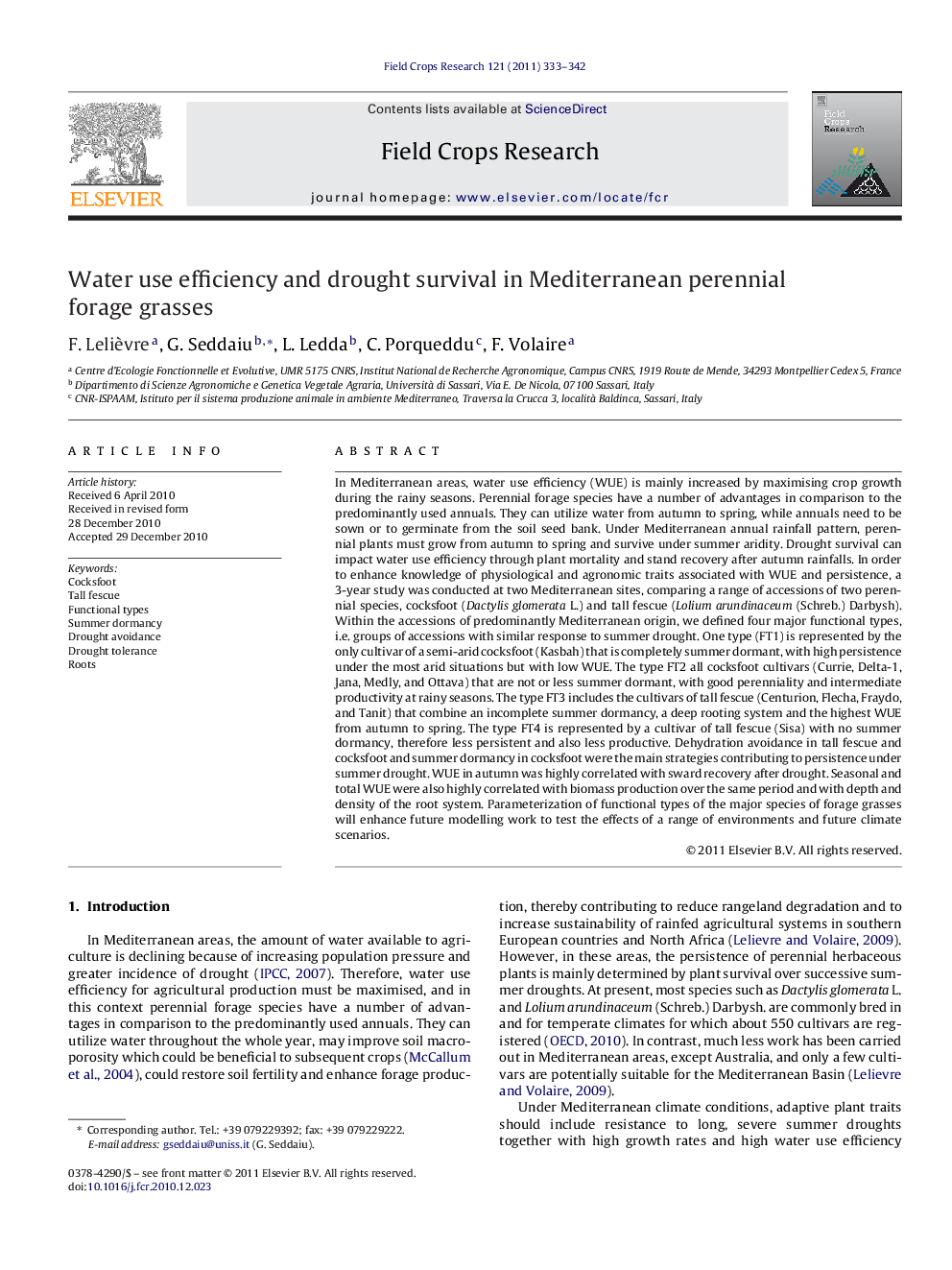| کد مقاله | کد نشریه | سال انتشار | مقاله انگلیسی | نسخه تمام متن |
|---|---|---|---|---|
| 4510811 | 1321876 | 2011 | 10 صفحه PDF | دانلود رایگان |

In Mediterranean areas, water use efficiency (WUE) is mainly increased by maximising crop growth during the rainy seasons. Perennial forage species have a number of advantages in comparison to the predominantly used annuals. They can utilize water from autumn to spring, while annuals need to be sown or to germinate from the soil seed bank. Under Mediterranean annual rainfall pattern, perennial plants must grow from autumn to spring and survive under summer aridity. Drought survival can impact water use efficiency through plant mortality and stand recovery after autumn rainfalls. In order to enhance knowledge of physiological and agronomic traits associated with WUE and persistence, a 3-year study was conducted at two Mediterranean sites, comparing a range of accessions of two perennial species, cocksfoot (Dactylis glomerata L.) and tall fescue (Lolium arundinaceum (Schreb.) Darbysh). Within the accessions of predominantly Mediterranean origin, we defined four major functional types, i.e. groups of accessions with similar response to summer drought. One type (FT1) is represented by the only cultivar of a semi-arid cocksfoot (Kasbah) that is completely summer dormant, with high persistence under the most arid situations but with low WUE. The type FT2 all cocksfoot cultivars (Currie, Delta-1, Jana, Medly, and Ottava) that are not or less summer dormant, with good perenniality and intermediate productivity at rainy seasons. The type FT3 includes the cultivars of tall fescue (Centurion, Flecha, Fraydo, and Tanit) that combine an incomplete summer dormancy, a deep rooting system and the highest WUE from autumn to spring. The type FT4 is represented by a cultivar of tall fescue (Sisa) with no summer dormancy, therefore less persistent and also less productive. Dehydration avoidance in tall fescue and cocksfoot and summer dormancy in cocksfoot were the main strategies contributing to persistence under summer drought. WUE in autumn was highly correlated with sward recovery after drought. Seasonal and total WUE were also highly correlated with biomass production over the same period and with depth and density of the root system. Parameterization of functional types of the major species of forage grasses will enhance future modelling work to test the effects of a range of environments and future climate scenarios.
Research highlights
► WUE and drought survival in Mediterranean perennial forage grasses were analysed.
► Four major functional types within the Mediterranean cultivars were identified.
► The identification of FT could serve to choose cvs. according to aridity levels.
► The identification of FT could serve to parameterize models on perennial grasses.
Journal: Field Crops Research - Volume 121, Issue 3, 3 April 2011, Pages 333–342